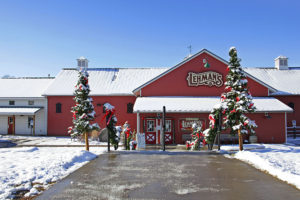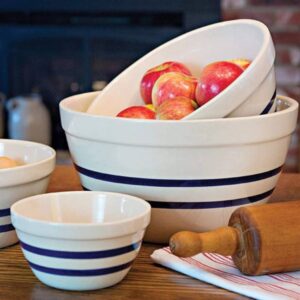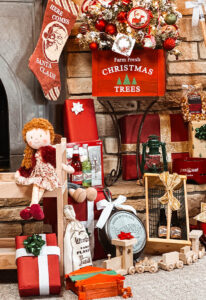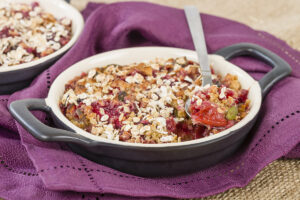Fall provides an abundance of natural materials for decorating and crafting.  If we search our gardens, farm stands and even along the roadside, we can collect items just waiting to be transformed into an autumn creation. From gourds and straw bales to pumpkins and corn shocks, it’s wonderful to use decorations that can be eaten or tossed in the compost pile rather than the trash can at the end of the season.
If we search our gardens, farm stands and even along the roadside, we can collect items just waiting to be transformed into an autumn creation. From gourds and straw bales to pumpkins and corn shocks, it’s wonderful to use decorations that can be eaten or tossed in the compost pile rather than the trash can at the end of the season.
From our popcorn patch, we tie together bundles of three colorful ears for decorating and later dismantle the trio to shell for winter popcorn. Our compost pile was generous in growing an assortment of gourds and even a huge pumpkin this year. The pumpkin stood guard at our steps for a week before becoming a pumpkin cake for a November birthday boy. Our family raises a small patch of sorghum cane and we save the beautiful burgundy seed heads to create fall swags embellished with wheat, sea oats, rose hips, teasel and other dried finds. Once Thanksgiving arrives, we hang the swags in a tree to feed the birds so they can enjoy their own feast.
Another fall resource begging creativity is the humble corn husk. Fields freckled with corn shocks are an icon of fall in our area and part of the fun of corn husk crafts is gathering the husks. Since field corn husks are the sturdiest for crafts, our family visited our Amish neighbor’s farm. We followed the corn pickers through the field on a balmy fall afternoon to fill our sacks with the creamy white inner husks. The Amish children have a week off from school each October for corn picking and every family member has a role in this huge task. A horse drawn wagon with one high side is pulled alongside the rows and the children go down the rows pulling off the ears, husking them with a peg strapped to their wrist and tossing them into the wagon. An older son will come behind each day with the corn binder that cuts and bundles the stalks. Stacking bundles into neat shocks that will withstand the weather is the final step in the harvest process. After picking several acres by hand during the week including one morning when it snowed, the neighbor children said they were looking forward to going back to school!
For most crafts, the husks are first soaked in water to make them pliable and then fashioned into all manner of things. I have a corn husk doormat that my grandmother helped me make from braided husks that she sewed together like a small braided rug. Mine serves as a decoration but in pioneer days, the rough ends of the husks functioned as a good surface to knock dirt off boots before coming in the house.
Probably the most common corn husk creation is a corn husk doll. To make one of these timeless toys, gather a bundle of 5-6 soaked husk pieces and tie a tight knot (or use a small rubber band) about 1 inch from the end with the rough curled part. Next bring the husks down over both sides of the knot and create the doll’s head by tying another knot for the neck. Take another husk and roll it into a tube and insert between the loose husks to create arms.
the rough curled part. Next bring the husks down over both sides of the knot and create the doll’s head by tying another knot for the neck. Take another husk and roll it into a tube and insert between the loose husks to create arms.
Choose a husk for an apron and lay it over the dolls head and tie a knot at the waist. Once the apron is folded down, trim the arms and skirts to desired length. You can decorate your doll further by gluing on corn silk hair, adding a bouquet of tiny dried flowers to her hand, fashioning a corn husk bonnet or other creative accessories. For a boy doll, simply divide the skirts into two legs and tie knots at the feet of each. While the creativity is flowing, why not create a whole family and don’t forget to attempt some barnyard animals.
Finally, be sure to enjoy some good old fashioned autumn fun with a young friend as you play together with your homespun creations.




























this store is too cool.